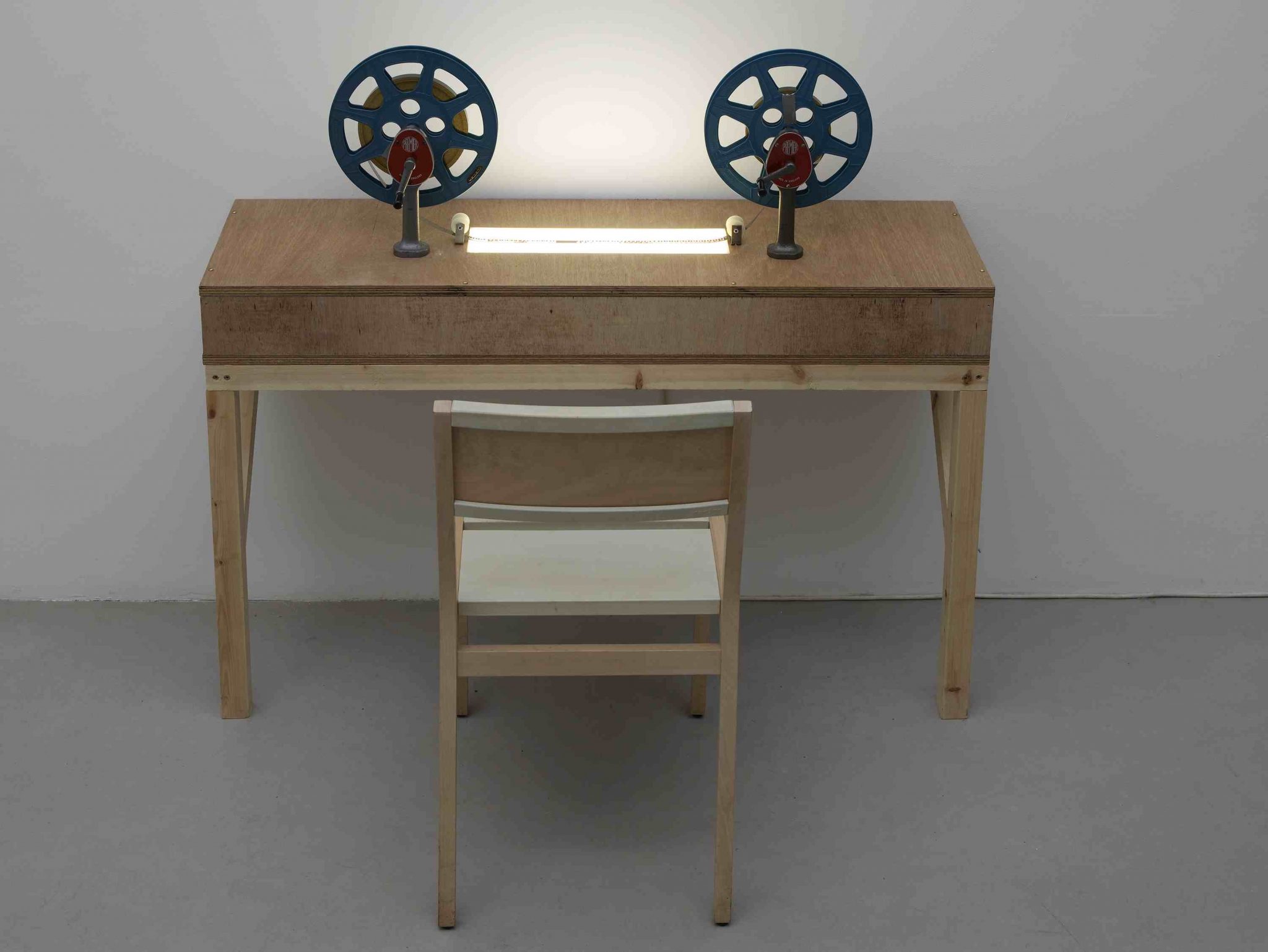Curated by artist-filmmaker Guy Sherwin, this exhibition offers the visitor a comprehensive over- view of the aesthetic, conceptual and institutional tendencies within British experimental film and expanded cinema. Though framed by artists – such as William Raban, Malcolm Le Grice and Annabel Nicolson – who developed their practice through the London Film-Makers’ Co-operative (LFMC) during the 1970s, the exhibition also includes younger artists such as Lynn Loo, Emma Hart and Lucy Reynolds.
Gender politics runs through the show as a subtheme, with the work of Nicolson providing the pivot upon which this turns. Nicolson’s Slides (1971) is presented as a filmstrip, needing to be hand-wound by the viewer, and a 16mm projection. Slides exemplifies the medium- specificity of many of the works exhibited; the images are tactile, with intense pools of colour, and bear the marks of being handled, scratched and worked upon. However, it is the room featuring documentation of Nicolson’s performances, films and ephemera relating to the LFMC that brings this exhibition alive. Footage of her expanded cinema performances – often reflective of contemporaneous feminist politics are displayed on a TV, and leaflets held in binders and vitrines register the establishment of Circles, the women artists’ film and video distribution organisation. Photographs of Nicolson performing Allan Kaprow-esque actions such as sweeping the sea, and her interest in nature and ecology, reveal the breadth of her practice as extending far beyond formalist experimental film.
Picking up from Nicolson’s work, Reynolds created Anthology (2012), featuring collaborations with 17 women artists for this exhibition. One of those collaborations, with Lis Rhodes, projects a horizontally split image; the top half is inscribed with white text on black pronouncing, ‘She took the washing from the line’ and ‘She carried the washing to the line’, while the bottom flickers with interchanging statements, including ‘and carried on reading’ or ‘and rolled the line away’. Here, text becomes material to be worked with in recounting feminised tasks, and the sum total of Anthology as a series of simple collaborations builds into an intriguing work.
Raban’s Diagonal (1973) and Sherwin’s Newsprint (1972/2012) are representative of some of the most exciting visual and aural experiments with film of the 1970s, and Steve Farrar’s Good Night Ladies (1999), back-projected in a narrow corridor, demonstrates the shift towards film as installation. In Gallery 3, an elegant, airy space, many of the works are preoccupied with light. Angela Allen and Nicky Hamlyn’s works show the interaction of painting with film, and Simon Payne’s digital experimentation with colour is reminiscent of Gerhard Richter’s 4900 Colours (2007) or a stained glass window. The strength of Film in Space lies in how it succeeds in opening up this rich field of practice – too often segregated into niche venues and institutions – to new audiences.
This review originally appeared in the April 2013 issue.
